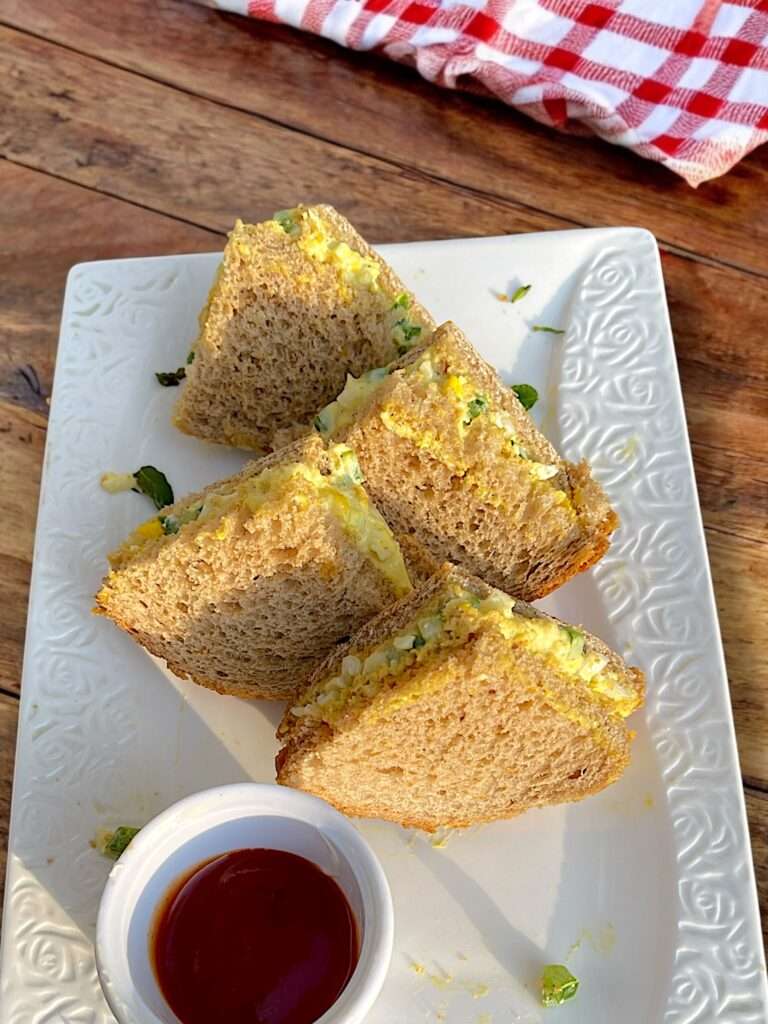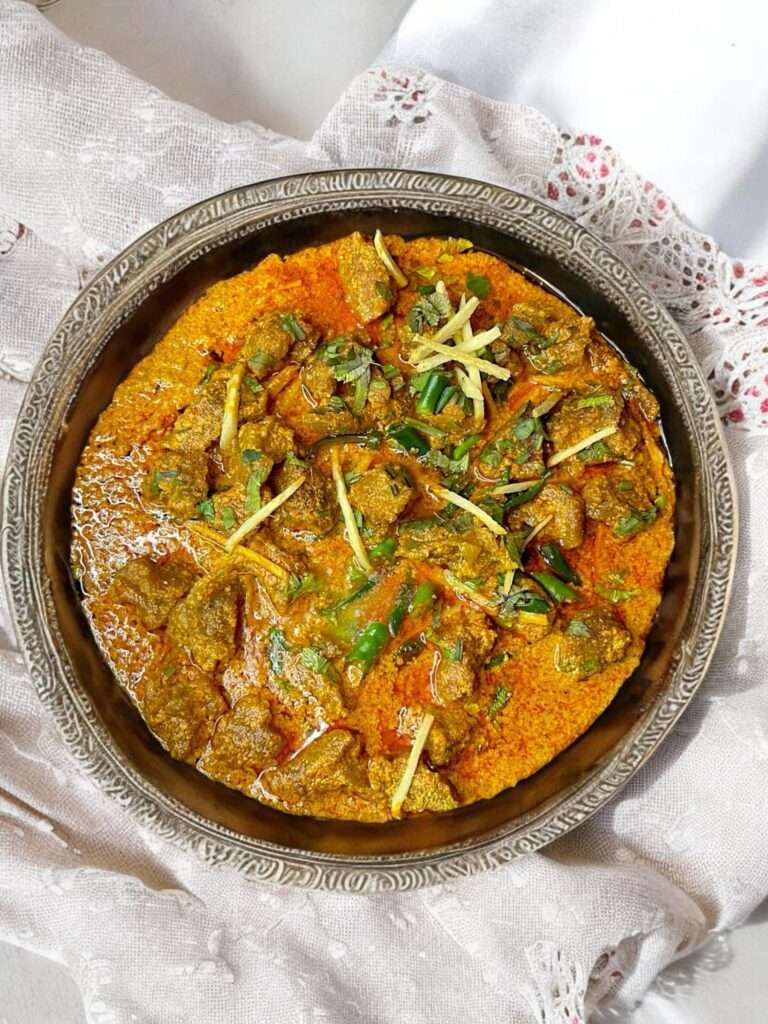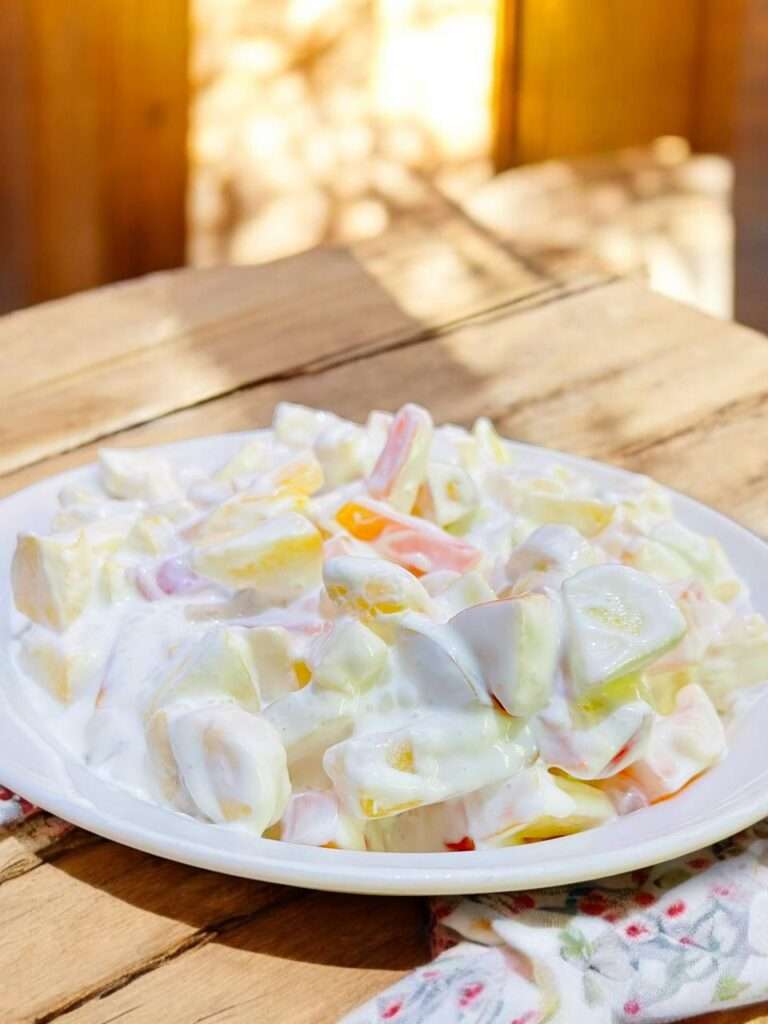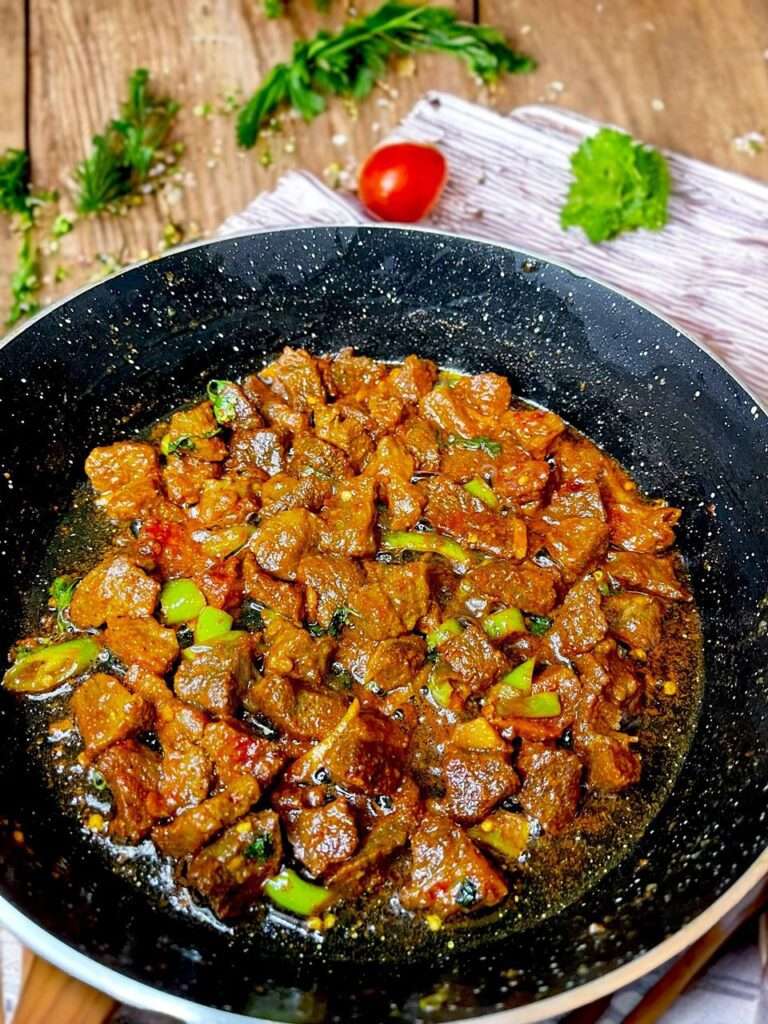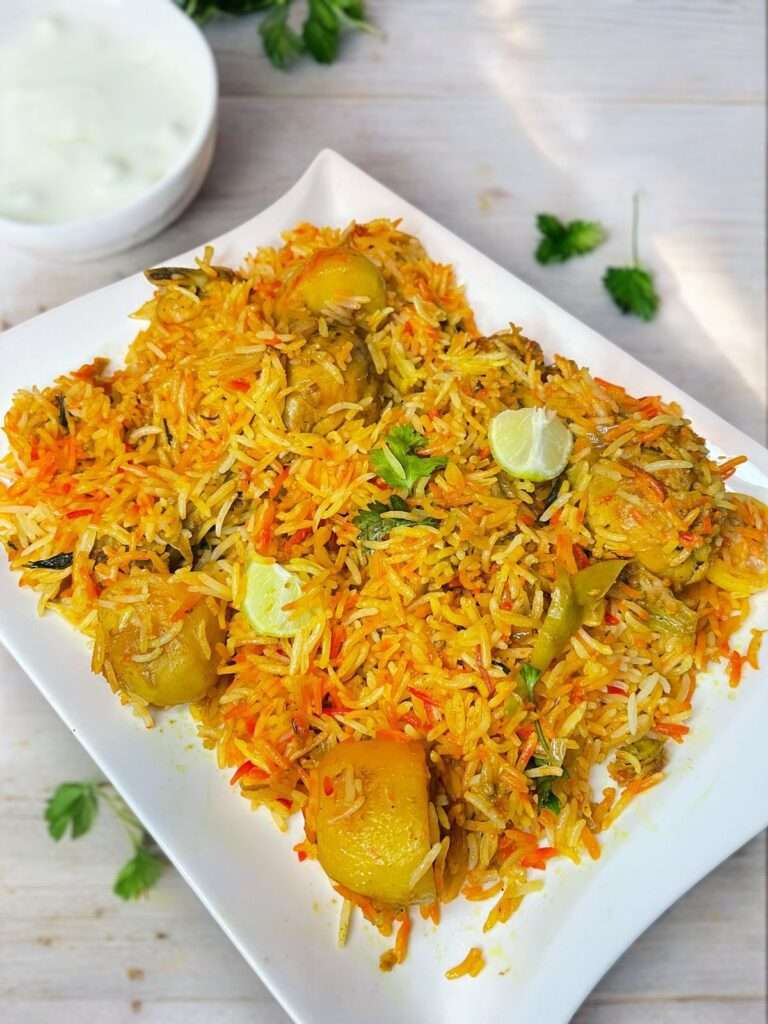Allow me to share with you this famous Beef Kebab recipe crafted with love and expertise by my Ami (mother). In our home, no occasion is complete without this extraordinary dish that embodies not only the flavors of our heritage but also the warmth of our love and togetherness. She’s been considered a guru in making meat recipes.
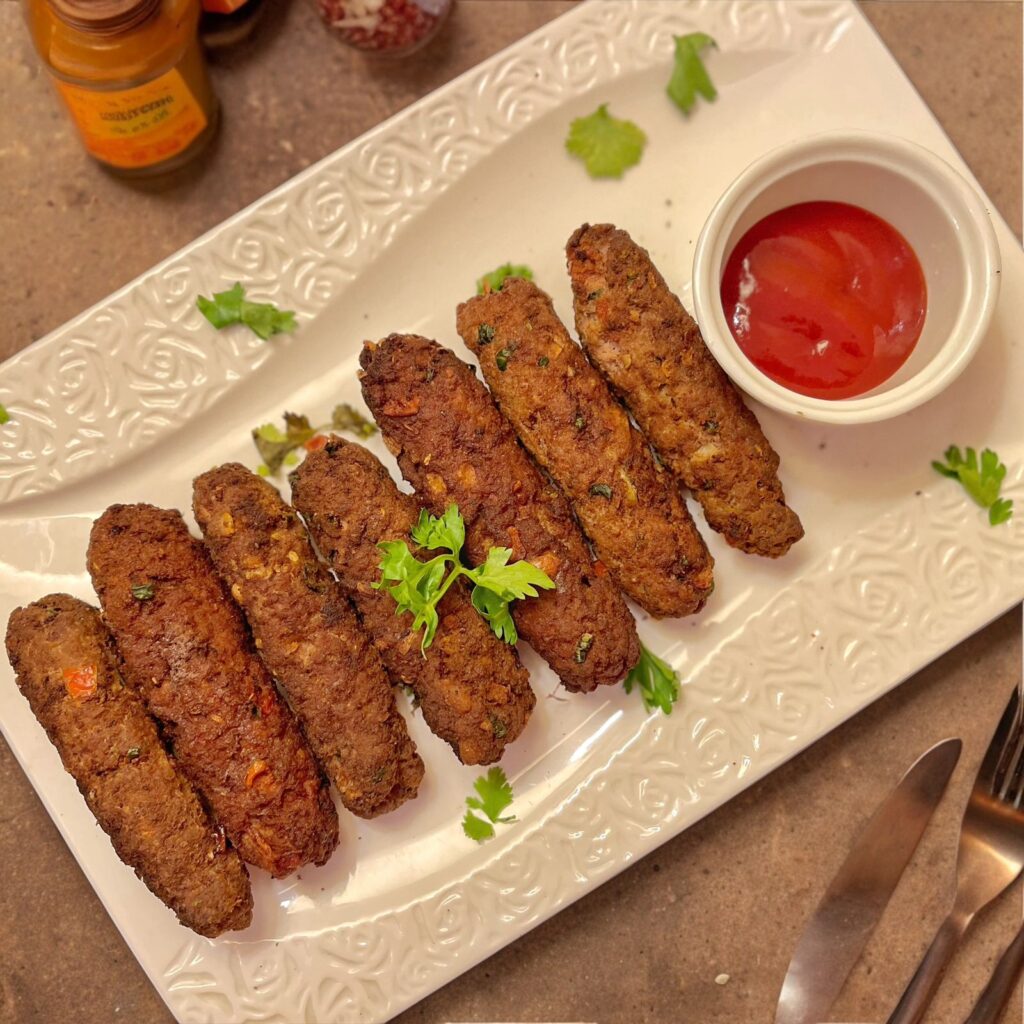
I am sure you will love making it for yourself as much as I love creating this recipe for you.
Origin of Beef Kebab
Kebab find their origins in the Middle East, particularly Persia (modern-day Iran), where they were known as “kebabs” or “kabobs.”
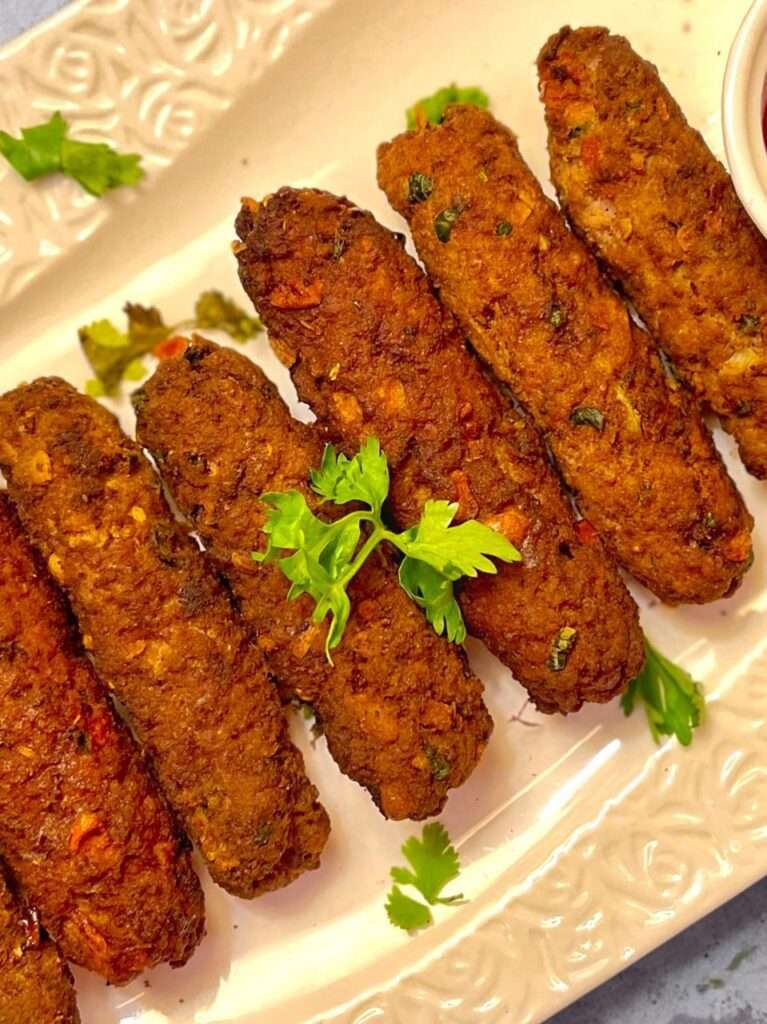
The novel method of skewering meat and cooking it over an open flame is thought to have originated in Persia and ultimately spread to other areas. With time, Kebabs’ fragrant impact expanded to Central Asia, Afghanistan, Pakistan, and India, among other places.
Each region infused its own culinary nuances and variations, resulting in a diverse range of Kebabs, such as the flavorful Pakistani Kebab also known as Seekh Kebab, and the soft and succulent Lucknowi Seekh Kebab from India.
Traditionally, Kebab were prepared by marinating minced meat, usually lamb or beef, with a harmonious blend of spices, herbs, and seasonings. The marinated meat was then skillfully threaded onto long, thin metal skewers called “seekhs,” which gave the kebabs their name. Or by shaping them with hands. These skewers were then placed over glowing charcoal or hot coals, allowing the meat to cook slowly, imparting a subtle smoky flavor.
Explore more kabab recipes
Chapli Kabab
Shami Kabab
Chicken Seekh Kabab
Cultural Significance And Global Popularity Of Kebab
Kebab’s have become an inseparable part of cultural celebrations, ceremonies, and festive occasions. These savory kebabs symbolize the communal spirit of sharing food and gastronomic pleasure. They provide a link to the multicultural heritage and historical legacies of the regions where they are celebrated.
Kebab have gained immense popularity across the globe through migration and global culinary influences. Today, they are a favorite street food, found in popular food markets, restaurants, and Pakistani or Indian cuisine establishments, satisfying cravings and delighting taste buds worldwide.
Beef Kebab, with its rich history and tantalizing flavors, stands as a testament to the culinary genius of ancient civilizations and their enduring legacies. From its origins in Persia to the Mughal courts and its subsequent evolution across various regions, this beloved dish has charmed food lovers for centuries. As we savor each savory bite, let us celebrate the cultural diversity and heritage that the Seekh Kebab represents, reminding us of the power of food to bring people together across time and borders.
Step-by-Step Instructions with Pictures
I believe step-by-step guide makes it more easy and simple to understand than reading a whole paragraph. Here are steps involved in making Beef Seekh kebabs:
- In a bowl, add ground beef in it. Make sure the meat is without any moisture. Put all the spices in the bowl. Mix well enough so that the ground meat is marinated in the spices. Cover the mixture for 30 minutes.
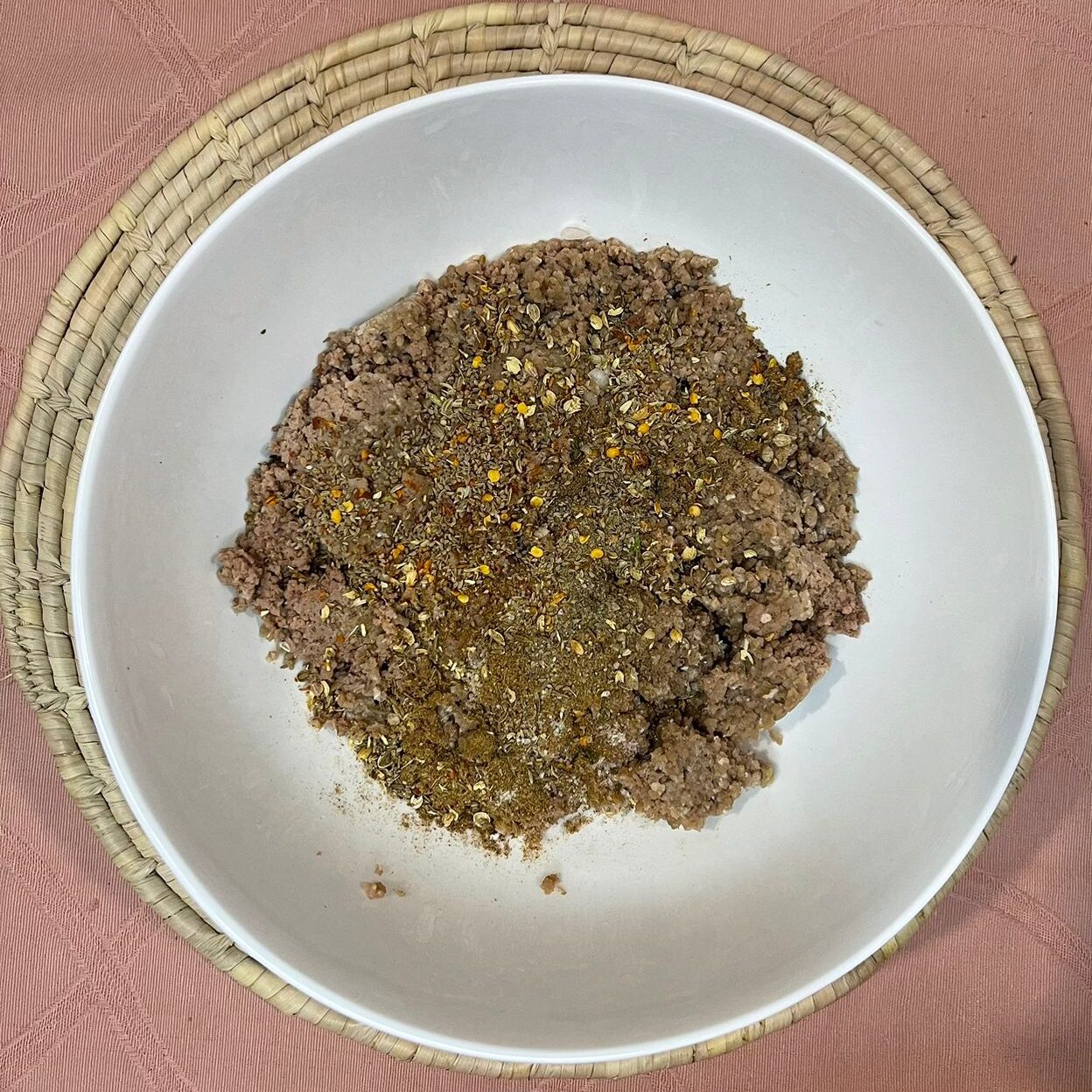
- Add ginger-garlic paste, chopped onion, green chilies, cilantro and mint leaves. Mix thoroughly to form a dough
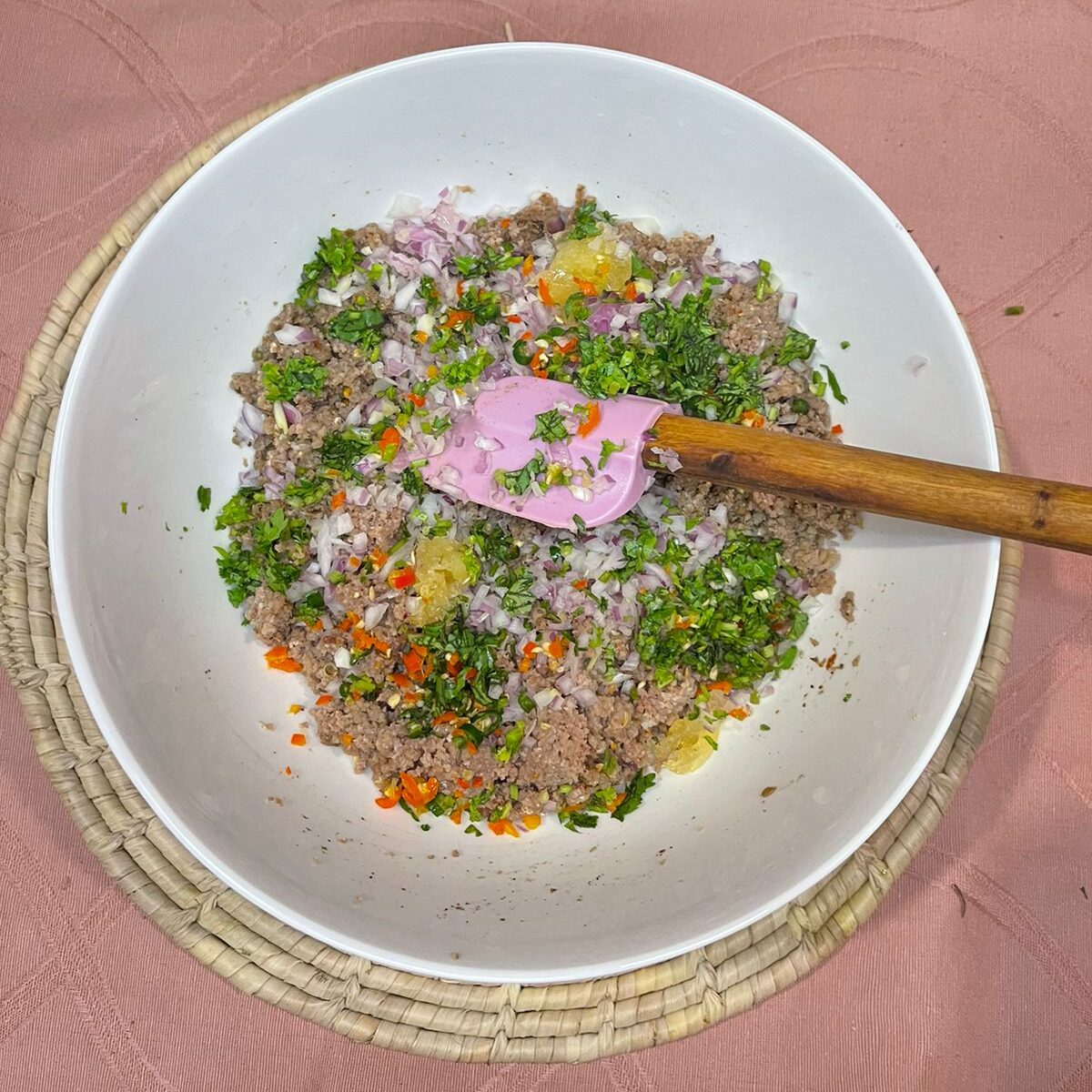
- Add a whole egg, knead a dough a little more until smooth texture appears.
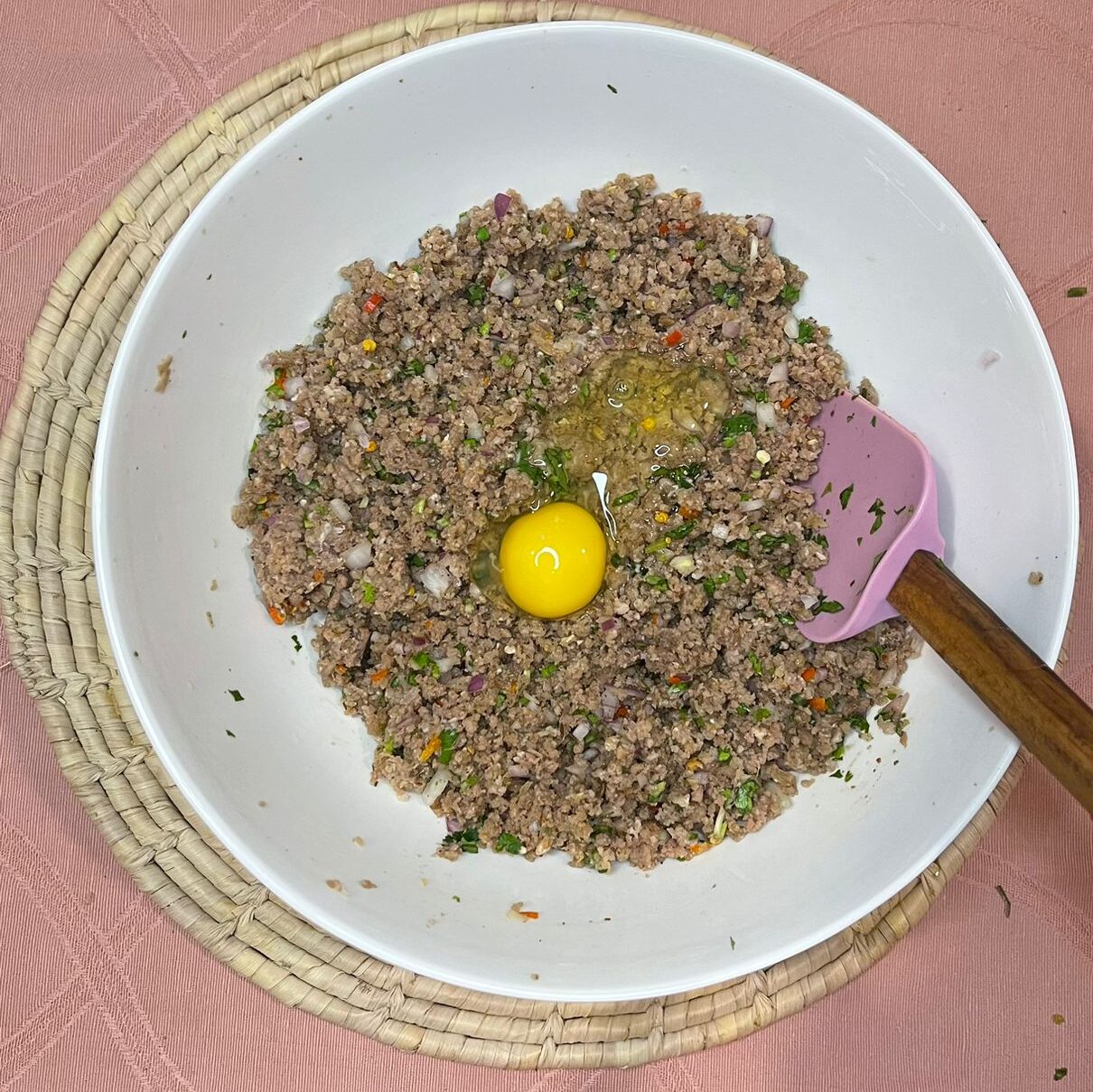
- Add a crushed bread slice and let it sit for 5 minutes so that it soaks all the moisture if any.
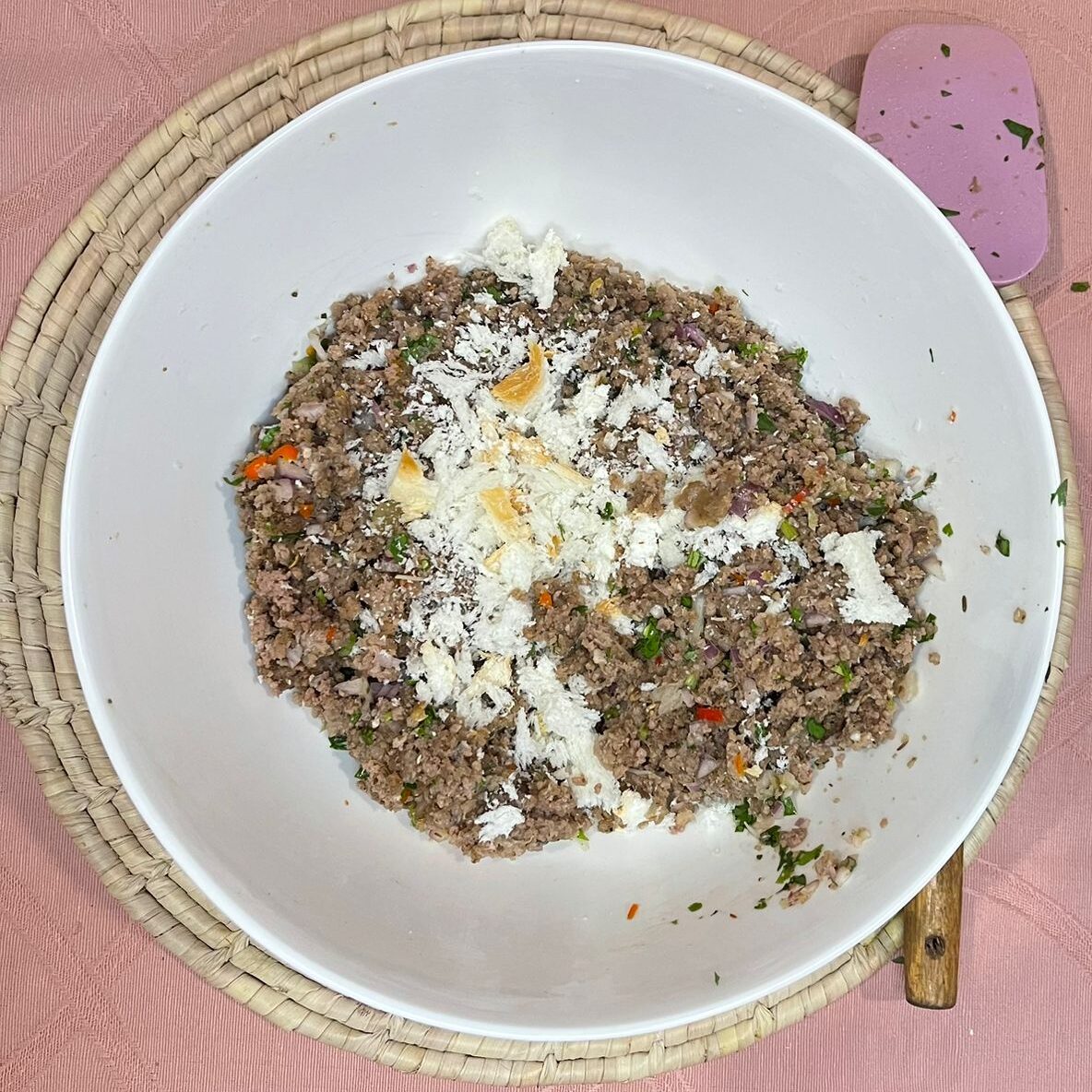
- When the dough is ready, place it in a refrigerator for at least 30 minutes before frying. Use an air tight container or use a cling sheet to prevent the dough from getting a moisture.
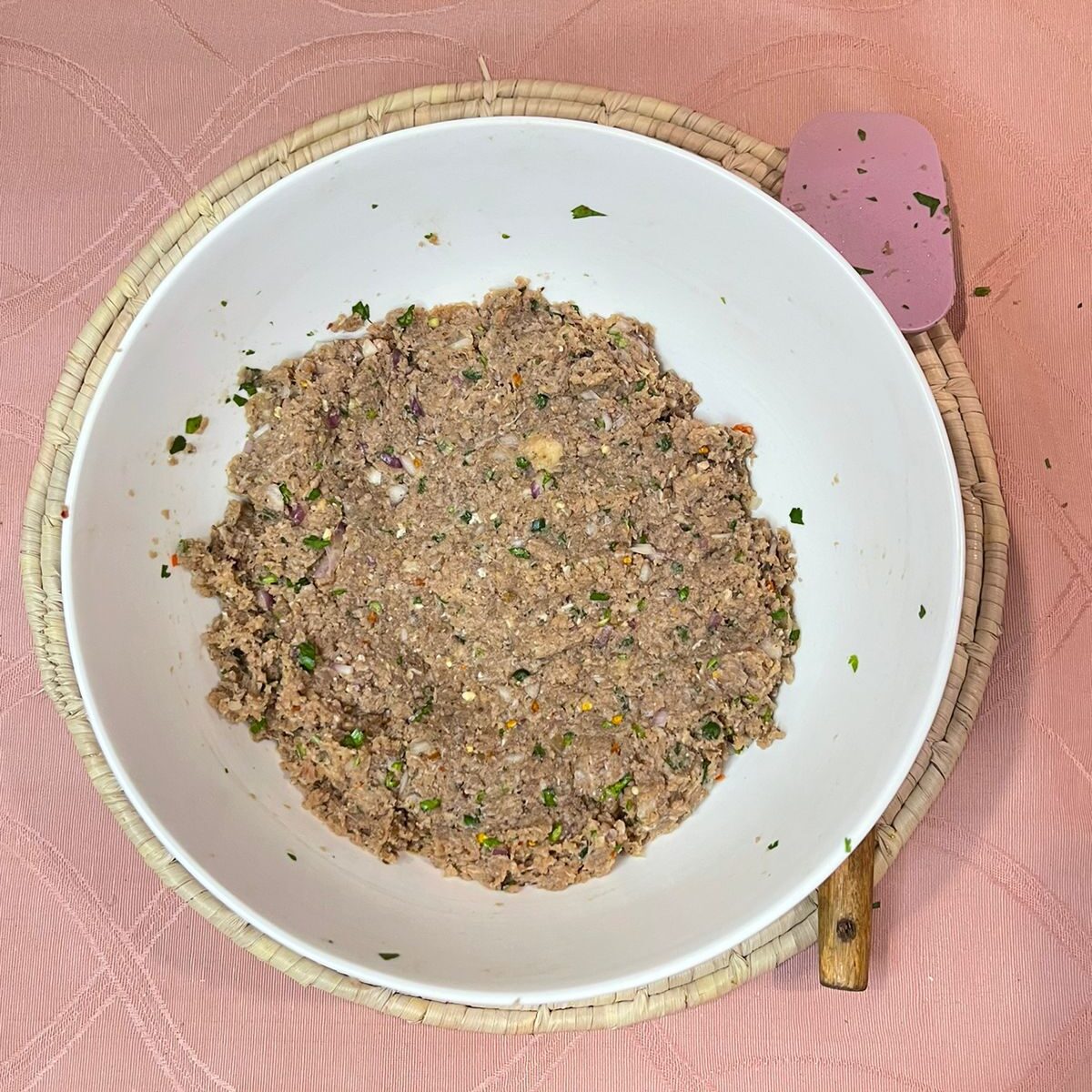
- After taking out from the refrigerator . Apply oil on your hands. Take a small ball of a meat, gently spread it on a Bamboo Shashlik stick or a metal skewer to form a Seekh Kebab shape. I am using a Shashlik stick here.
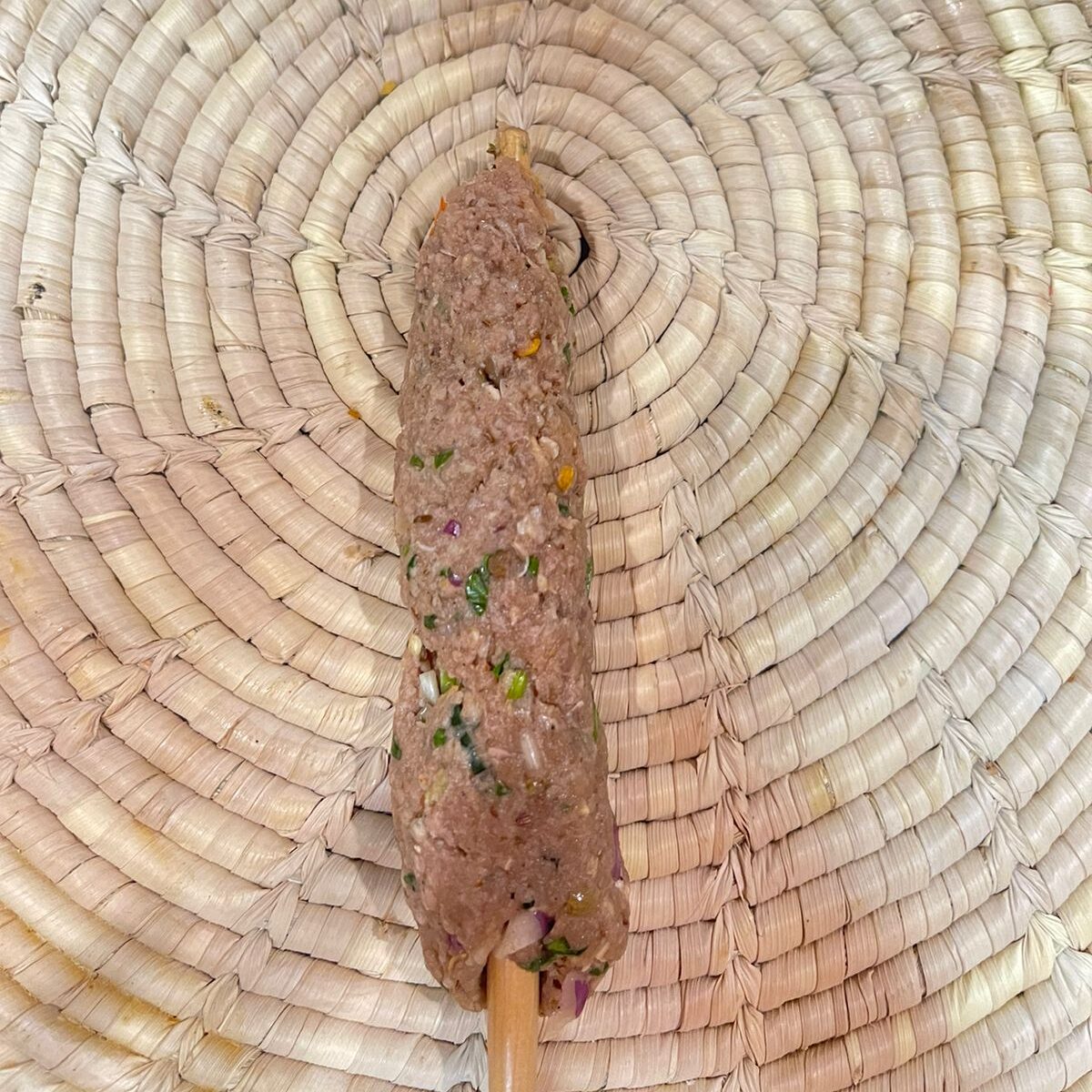
- Pour oil in the frying pan, keep the flame low-medium. Fry kebab, each side for 4 minutes or until crispy crust appears.
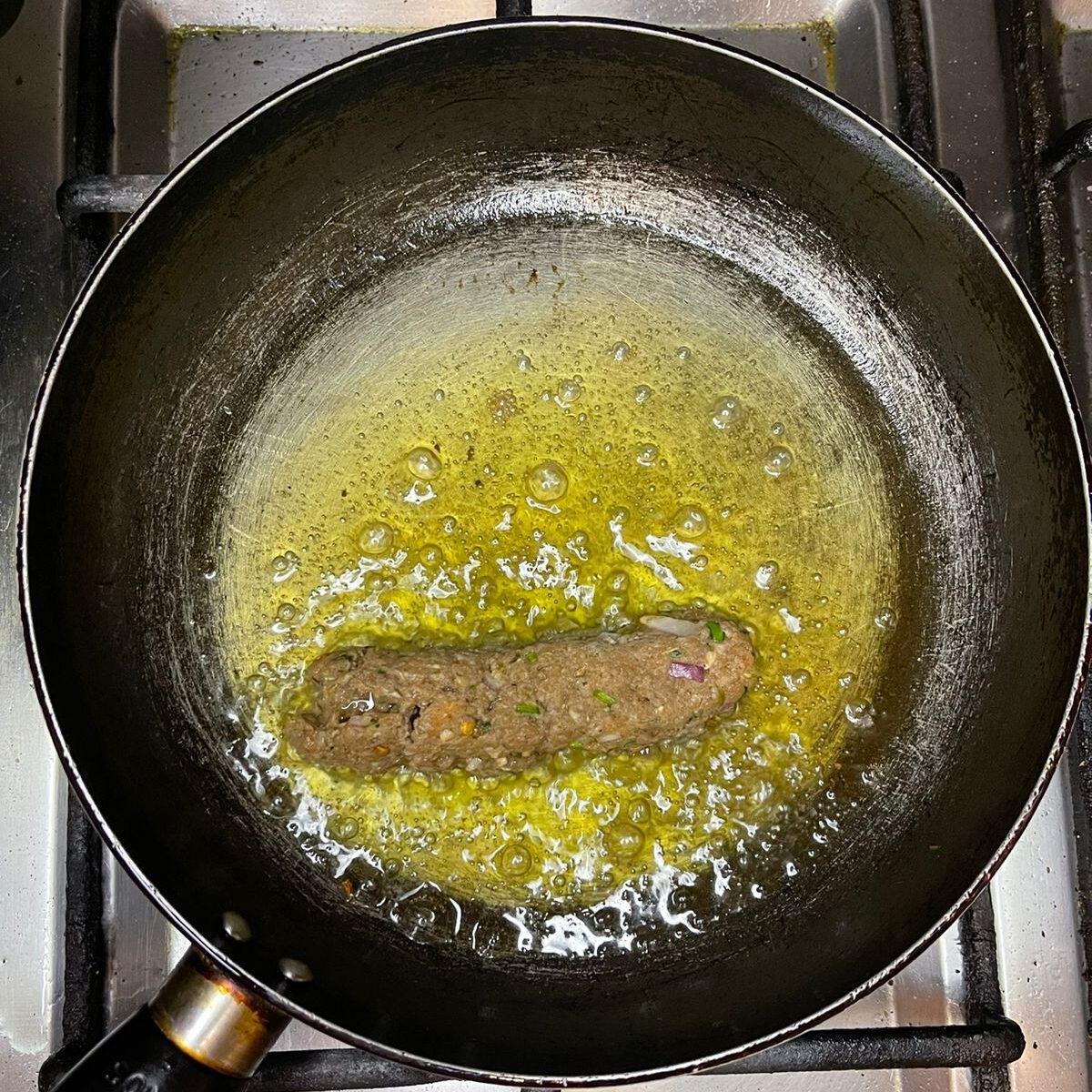
Serve hot with mint chutney or any side of your choice!
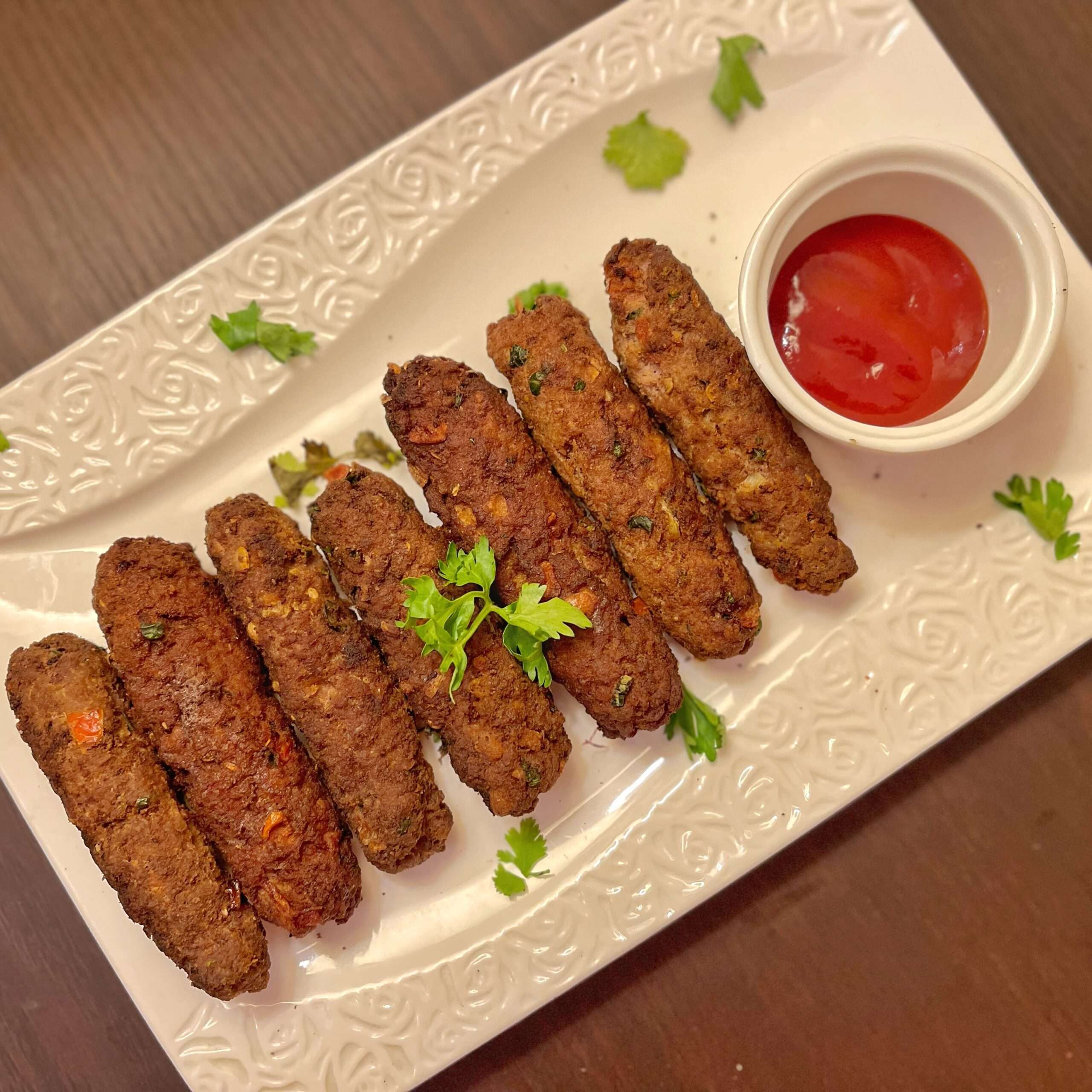
Some Tips And Tricks To Make Perfect Beef Kebab
To make delicious beef Seekh Kebab, these are several key instructions that I follow and I recommend you should also follow. Seekh kebabs are traditionally prepared using minced meat (usually lamb or beef) mixed with various spices and shaped onto skewers before grilling or broiling. Here are some instructions to consider:
1. Meat Selection
Ensure you choose fresh and high-quality meat. The perfect Seekh Kebab should have a good balance of fat and lean meat. Keep a ratio of 80:20 (80% meat with 20% fat). Lamb or beef with a little more fat content tends to yield juicier and tastier kebabs.
2. Mincing the Meat
Start by mincing the meat finely. Grinding the meat twice or thrice will help achieve a desirable texture for the kebabs. Make sure the meat is evenly minced without any large chunks.
3. Marination
If you’re using fresh meat then marination isn’t required. If you’re using frozen meat, I recommend marination. Use a mixture of ginger-garlic paste, spices (such as cumin, coriander, garam masala), lemon juice, and salt. You can also add ingredients like papaya paste or raw papaya powder to tenderize the meat. Let the beef mince marinate in the refrigerator for at least two hours, or better yet, overnight.
4. Binding Agents
To bind the minced meat together, add 1 slice fresh bread (soaked and squeezed). Roasted chickpea flour (besan) or corn flour (Makki ka atta. These binding agents help to hold the kebabs together and prevent them from falling apart during cooking.
5. Skewering
Take bamboo or metal skewers and soak them in water (if using bamboo skewers) beforehand to prevent burning. Take a portion of the marinated meat and gently press it onto the skewer, shaping it into a cylindrical kebab. Repeat the process with the rest of the meat mixture, leaving a small space between each kebab for even cooking.
6. Cooking Technique
Seekh kebabs are traditionally cooked over a grill or broiled in the oven. Set the oven or grill to medium-high heat. Brush the kebabs with oil to prevent sticking and cook them for about 10-15 minutes, turning occasionally, until they are evenly browned and cooked through. Alternatively, you can cook them in a skillet on the stovetop (I opted this option and you’ll see how perfect and delicious my kebabs turned out)
More Beef Recipes
Keema Curry
Beef White Karahi
Kabuli Pulao
Beef Masala Karahi
Serving Suggestions
Serve Kebabs hot as an appetizer or as a main course with naan bread, mint chutney, and sliced onions. Garnish with freshly chopped coriander leaves and lemon wedges. Enjoy the kebabs while they are still tender and juicy.
Remember, Seekh Kebabs require some practice to perfect, so don’t be discouraged if they don’t turn out perfectly the first time. With time and experience, you’ll be able to adjust the seasoning and cooking times to create delicious Seekh Kebabs. But if you follow exact same recipe, I’m sure you won’t be disappointed.
Special Instructions to make Tender Beef Kebab
Before discussing special instructions, it’s important to note that when it comes to cooking, there’s always room for creativity and personalization. Don’t be afraid to experiment with flavors, adjust spice levels, and incorporate your favorite ingredients. Cooking is an art, and making Beef Seekh Kebab is no exception. So, feel free to unleash your culinary prowess and tailor the recipe to your liking. That being said, let’s now move on to some special instructions that can help you achieve the best results when making Beef Seekh Kebabs.
- Never use watery minced beef or any meat, while making kebabs. When cooked, the excess liquid causes the kebabs to crumble and become smaller.
- A slice of fresh bread makes your kebab texture smooth by drying out all the moisture as Kebabs made with minced meat usually need more binding agent than salt.
- Eggs are essential ingredient for making a variety of meat dishes as they provide batters structure and stability, add moisture and can even be used as binding agent.
- I use red onion, chopped but you can use whatever onion is available in your kitchen. Make sure the water that onions release is dried out.
- I squeeze 2 fresh lemons to extract the juice. Also because of their strong acid content, lemons are an excellent meat tenderizer.
- To add more flavor and fragrant aroma, roast coriander and cumin seeds on the stove in a pan and then coarsely chopped them in a chopper.
Variations and Substitutes
Here are some variations and substitutions you can consider when making Beef Seekh Kebabs:
- If lemon juice is unavailable in your kitchen, vinegar is a great replacement for lemon juice.
Use a 1/2:1 ratio to replace lemon juice with white vinegar. It’s acidic and tangy, just like lemon juice. You can also use Papita Powder (Papaya powder) instead. - Breadcrumbs can be used instead of a bread slice. Why I prefer fresh bread slice over breadcrumbs is because fresh bread slice manages to absorb all the moisture from the meat which makes the texture smooth.
- If you don’t have metal skewers in your kitchen, you can use wooden shashlik sticks or even a pencil to shape your kebabs.
Frequently Asked Questions
[sp_easyaccordion id=”2151″]
I would love to hear about your experience. Did the flavors transport you to the enchanting streets of Pakistan? Did you find any unique twists or additions that took these kebabs to new heights? Share your thoughts, feedback, and suggestions in the comments below. I believe in the power of community and the joy of sharing our love for food, so don’t hesitate to join the conversation. <3
Beef Kebab | Pakistan Kebab
Course: AppetizersCuisine: SouthAsian10-12
servings15
minutes20
minutes750
kcalIndulge in the Authentic flavors of Pakistani Seekh Kebabs – tender, juicy, and bursting with traditional spices. These are handmade with the finest ingredients which shows the rich heritage of Pakistani cuisine in every flavorful bite. Experience the true taste of Pakistan with this irresistible Seekh Kebabs recipe!
Ingredients
500g or 1/2 kg Beef, finely minced (80:20) 20% fat
1 medium onion, finely chopped
1/2 cup mint leaves, chopped
1/2 cup fresh coriander, chopped
1 tablespoon ginger-garlic paste
2 green chilies, chopped
1 tablespoon lemon juice
1 teaspoon salt (adjust to your taste)
1 teaspoon garam masala
1 teaspoon black pepper powder
1 teaspoon carom seeds
1 teaspoon cumin seed, grounded
1 teaspoon coriander seed, grounded
1 egg
1 bread slice
Directions
- Put 1/2 kg beef mince in a bowl. Make sure there is no moisture present in the meat.
- Add ginger-garlic paste and all the spices in the bowl ( salt, garam masala powder, black pepper powder, carom seeds, cumin seeds grounded, coriander seeds grounded). Mix thoroughly enough for the spices to marinade the meat and cover the mixture for minimum 30 minutes.
- Add 1/4 cup chopped mint leaves, onion, green chilies, and cilantro. To create a dough, thoroughly combine.
- Add an egg and continue to knead the dough until it takes on a smooth texture.
- Add a piece of smashed bread and let it sit for five minutes to absorb any moisture.
- Now the mixture is ready. Before cooking the dough into kebabs, chill it in the refrigerator for at least 30 minutes. To keep the dough from getting wet, use an airtight container or a cling sheet.
- To make a Seekh Kebab, grease your hands with oil. Take a little meat ball and carefully spread it out on a bamboo Shashlik stick or a metal skewer (seekh).
- Add oil in the frying pan or skillet, maintain a low to medium flame. Fry kebabs for 4-5 minutes on each side, or until a crusty crust forms.
- Serve hot with mint chutney and fresh naan/ chapati.
Notes
- Roast the spices ( Carom seed, Cumin seed and Coriander seed) before using. Roast them on low-medium flame until fragrant aroma spreads in your kitchen. However, do not burn them.

